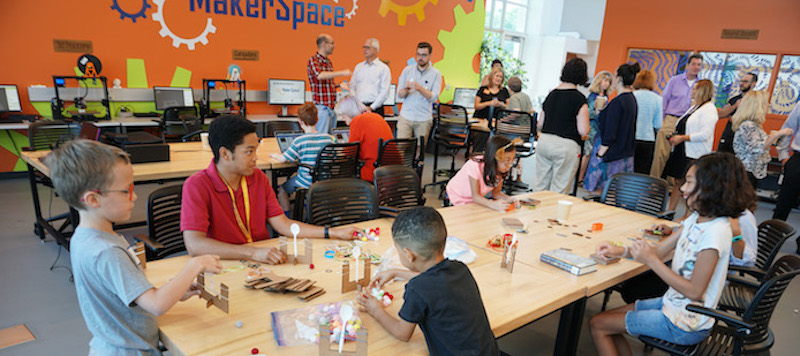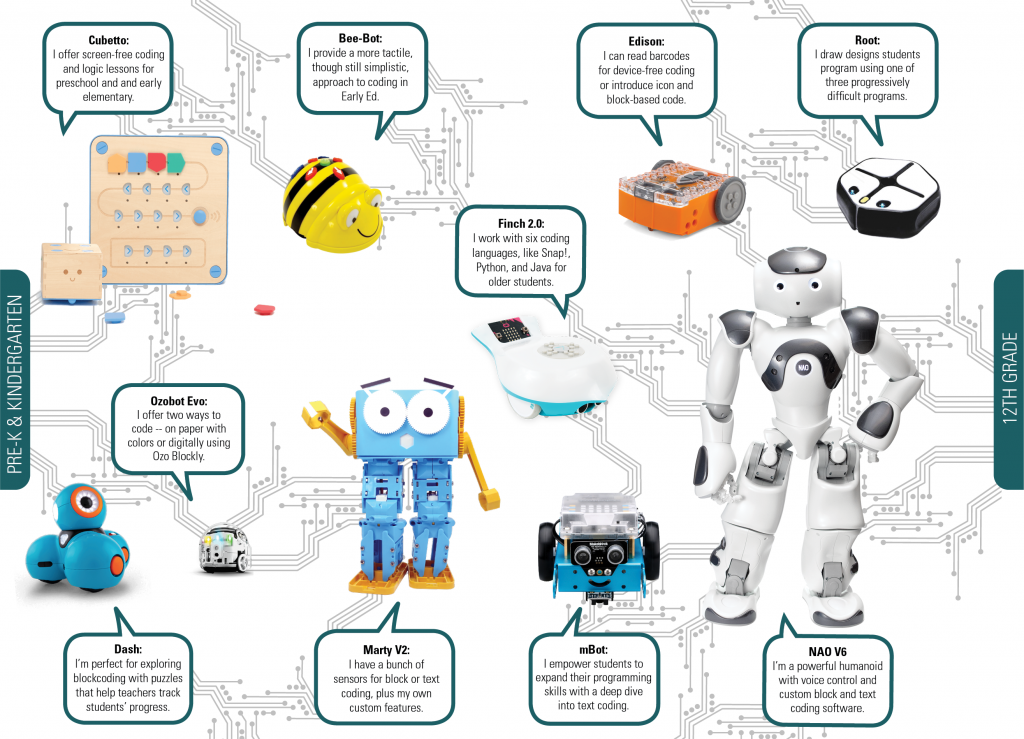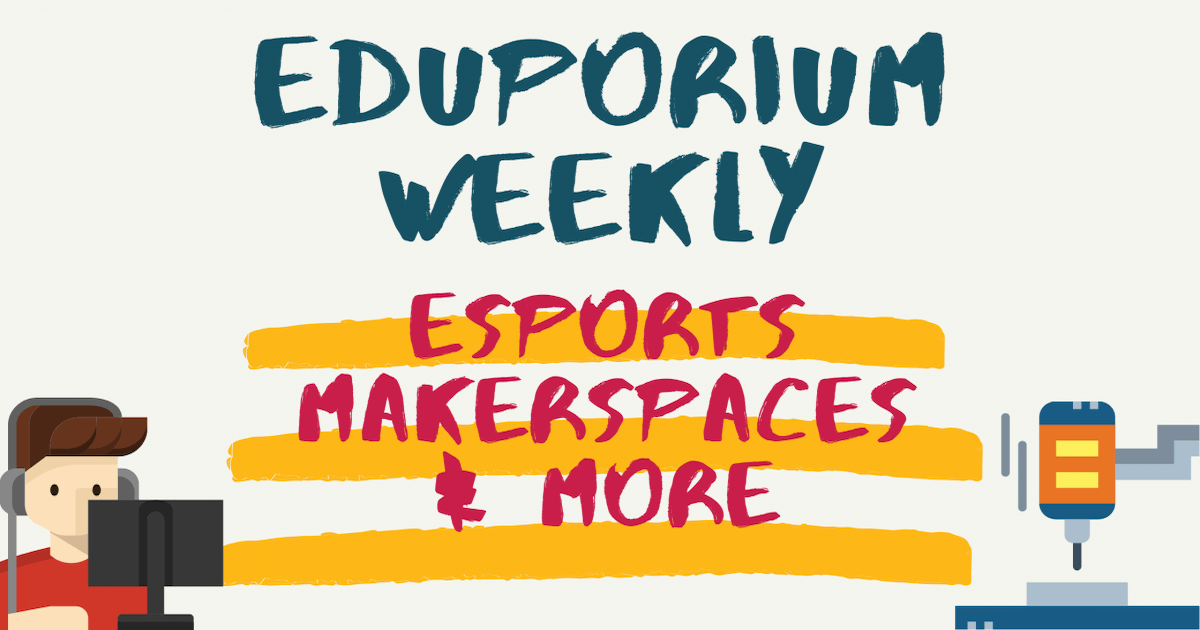At Eduporium, we really try to build up expertise on STEM and makerspace topics continually. As popular learning initiatives within STEM evolve and adapt to better serve students in the 21st century, we’re always doing our best to gauge how we might help educators and students be a part of them. We’ve even created content for school and district leaders, classroom educators, librarians, and others to help add clarity. Over the last few years, we've published various white papers, hosted STEAM webinars, and shared dedicated resources for helping teachers to learn more about some of these intriguing areas of STEM education. This includes insights on esports in schools, why makerspaces are important, and how grants can help out.
Esports in Education
As we've mentioned, we're now offering solutions for a new STEM discipline—esports. If you’re not all that familiar with esports, it’s the competitive, team-oriented playing of various video games. Typically, kids in a school (usually up at the high school level but some middle school esports teams have popped up, too) will try out to make the team just like in other varsity sports. In fact, esports is the latest varsity sport to emerge in high school, creating new opportunities for students. Some of the real-world benefits of offering esports opportunities in high school include students finding a new way to belong in their school community, the chance to learn about different careers, and even potentially earn esports scholarships to play in college.
Esports, relationships, and SEL.
While we can't necessarily support educators who are looking to create a gaming curriculum, we do have a white paper on the topic of esports in education. It features lots of valuable insights from esports coaches and athletic directors who we spoke to for this content. Esports across both high schools and in colleges is very relevant currently—offering students legitimate exposure to new careers beyond gaming. Participating in these esports programs allows students to connect from almost anywhere. More importantly, they get to stay close with their friends, which is such a huge social-emotional factor that still lingers after the remote learning era. The coaches with whom we spoke echoed this sentiment and, since many students have their own gaming systems, participating in school esports can be easy.
Should esports be in schools?
So, in this white paper, which is free to download, we broke down some of the most important things that somebody who might be completely new to esports would need to know. These include more specifics on key benefits of interscholastic esports, how coaches or school administrators might go about starting their school esports team, and both the short-term and long-term benefits that esports can provide to today's students. We’ve also added efficient and affordable esports equipment on our store, including computers, mice, keyboards, and more. As esports continues to grow in popularity, it can certainly create value, enrich STEM experiences, and also boost social-emotional connections. To learn more about incorporating high school varsity esports and more, download our white paper!
Makerspaces in the School Library
Besides esports, another trend that we’ve been in on for a long time is makerspaces in education. If you’re familiar with makerspaces or the Maker Movement, you may know that school makerspaces have unique designs and spring up in many different places. They can even feature high-end technologies, like new 3D printers, and no-tech items, like cardboard, tape, and screwdrivers. Whatever is commonly in your school makerspace, there’s a decent chance that it’s located within your library. Some school leaders have turned to librarians to help facilitate innovative learning opportunities. And, as hands-on learning expands, lots of librarians have seen roles shift to accommodate MakerEd and the importance of creativity.
Our makerspace white paper.
To better highlight the value and importance of makerspaces in school libraries, we created a white paper. Focusing on the roles that libraries and, more importantly, school librarians and media specialists play in facilitating MakerEd in schools, the white paper provides real value for any educators looking to bring 21st century opportunities to each student. Though it's certainly unique, there's definitely a correlation between school librarians and student opportunities for MakerEd. In the white paper, we provide inspiration for how leveraging the Maker Movement's popularity helps generate legitimate learning opportunities. Starting with embracing a maker mindset and those values of maker culture, makerspaces in the school library can be eye-opening for both students and teachers.
Adding makerspace learning to the curriculum.
In the white paper, we talk a lot about how the rapid onset of utilizing library spaces for maker learning has affected students and librarians along with the growing number of K-12 maker experiences that take place in school libraries. We also discuss how any librarians can leverage a maker mindset and various MakerEd tools to create beneficial experiences. Beyond those points, we touch on adopting the principles that have propelled the Maker Movement in K-12 education and some of the elements that often go into successfully adopting maker education in school library spaces. Finally, you'll learn about creating new levels of synergy between learning in the classroom and learning in the makerspace or library. For more on creating valuable MakerEd experiences and why the library might be the best place, download the white paper.

What to Prioritize in your School Makerspace
Aside from sharing various benefits of librarians facilitating MakerEd opportunities, we’ve also learned lots about how to build a makerspace. We’ve often said that no two makerspaces are created equal and we do certainly believe that. Here are some classic elements, however, that can help teachers create inspiring and effective environments for students to design, invent, and learn. Ultimately, your makerspace design comes down to a lot of different factors, like the amount of physical space you have, the technologies you already have in place, your budget, tech knowledge, and even student interest. Keeping in mind that makerspaces don’t need flashy machines or the latest electronics equipment, there are, however, some obvious things (and some not so obvious) that can help you design a great makerspace.
What to put in a school makerspace.
Some tools in school makerspaces are physical and tangible while others can't be picked up or measured. At the top of this list is manufacturing, which involves standard maker tools, like 3D printers, and creating something tangible. Other items that teachers can use to facilitate hands-on learning and problem solving include educational robotics tools—some of which students have to build—and coding kits—which help them boost problem solving, collaboration, and debugging skills. That leads to some of those other effects you can’t necessarily measure. We can, however, certainly tell when things like collaboration and creativity are present. Collaboration is such a big part of the 21st century workforce and the Maker Movement. Plus, creativity, of course, helps all students explore innovative approaches and discover solutions—one of the cornerstones of makerspace learning.
Designing successful MakerEd experiences.
A couple of other elements of a good makerspace include problem solving and productive failure. With all the hands-on exploration, problem solving often follows naturally but, occasionally, kids may need multiple tries, which is fine. That leads us to productive failure. Finding solutions in school makerspaces isn’t always necessarily going to yield a clearly “correct” approach or answer. Students often learn a lot from their failed attempts, which definitely counts as being productive in our minds. Finally, two other key elements include new opportunities to make something (anything really) and the need for a resource—a skilled, patient, and informed member of the school faculty who can assist with both project completion and social-emotional stability. To explore these elements more in-depth, set up a chat with our team.
Makerspace Grants and Grant Support
Switching gears from our content, we’d also like to share some of the other ways we could help. One thing that helps enable innovation in education—especially with technology—is the opportunity to apply for tech grants. We offer our own EdTech grant, awarding $500 of credit to our store to deserving educators every month. For many years, we provided one $500 award per month. Just recently, however, we've decided to expand this program and will now be offering two! These grants, of course, are among the thousands that are available to teachers at all grade levels across the country. So, we also know that managing your grant applications, deadlines, and more can be really time consuming. That’s why we’ll also offer support to help streamline the process no matter what grant you’re applying for.
Making grant applications stand out.
When applying for makerspace grants, educators have to impress those selection committees while also competing against many other deserving teachers. When it comes to differentiating themselves for grant applications and standing out, we can help set those applications apart. So, let’s break this down for you. Essentially, our knowledge of the latest EdTech trends and educational needs helps us make suggestions for applications. Our insights and recommendations can help educators discover new ways to potentially use technology in the curriculum, align lessons to standards, and keep students engaged as they develop vital 21st century skills. Having seen so many ways in which STEM tools benefit children allows us to pass these nuggets on to educators to then use in their applications.
How to get our help.
We encourage educators who are applying for a specific grant or those who have already begun the grant writing process to get in touch with us. Whether you need EdTech product recommendations for if you are selected or help pinpointing the 21st century value of various STEM tools for your application, we can help shed some new light on things. We would start the process with a conversation to learn about which grant you’re applying for. This helps us gauge your existing EdTech knowledge and your capacity for integrating different technologies in the classroom. It even helps us recommend what to include in these applications and, hopefully, increase your chances of selection. If this would benefit you or any other educators in your school, we definitely encourage you to contact us.

Eduporium Robotics Progression
The last offering we’d love for all educators to learn more about is our Robotics Progression Chart. There are so many educational robots available for teachers and students. With this clearly illustrated timeline, we have made it easier to learn about which bots work best for teaching kids different programming languages and concepts at different grade levels whether in their classroom or in the makerspace. It features 10 of the most popular and effective robotics tools—all of which (except for the NAO and mBot-S) also include class pack options that come with accessories, curriculum guides, or STEM lesson plans. Essentially, the chart displays our favorite options beginning with early education robotics. Then, there are the elementary and middle school options and our top suggestions for the high school level to wrap things up.
Early education and elementary school robotics.
Though there are only 10 robots on the chart, they’re certainly not the only ones we like. If it’s on our store or blog, we find tremendous educational value for using it in any STEM classroom. Talking about these 10, however, the progression starts with the Cubetto and the Bee-Bot, which are easy enough for students to use as early on as Pre-K. These simplistic systems help them explore basic programming concepts with a screen-free approach to learning logic. Next, we have the Dash from Wonder Workshop, which is perfect for robotics for elementary students. Its vibrant personality and fun activities help kids bolster more coding skills through block coding. Then, we have the Edison Robot, which students could use with or without a screen. Using one of its apps, however, opens up more with block or text coding.
Upper elementary, middle school, and high school.
Moving on, next is the Ozobot Evo with a sweet spot in first through fifth grade. Kids can use it without a screen (programming with color codes) and gradually progress up to block coding using OzoBlockly. Then, there’s the Finch 2.0, which enables students to try more advanced coding in MakeCode, Python, or Java. Next up, we have the Root Robot, which is viable in early education but ideal for upper elementary school. It allows kids to program in three levels: blocks, hybrid, and text. There’s also a virtual version kids can use at home without the physical robot. Finally, for high school students, we have the Marty Robot, the mBot-S, and the NAO Robot. Plus, with the Marty V2, students can also go deeper into text coding. And, using the NAO, they can learn advanced CS concepts with its specialized Choregraphe software.
If you'd want to learn more about these educational robots and other STEM resources, reach out any time. For the latest EdTech, STEAM, MakerEd, and 21st century education news, follow Eduporium on Twitter or Instagram. Like us on Facebook, too, or sign up for our newsletter for our latest product announcements and deals. If you have ideas for an Eduporium Weekly theme, share it on social media or comment below.



